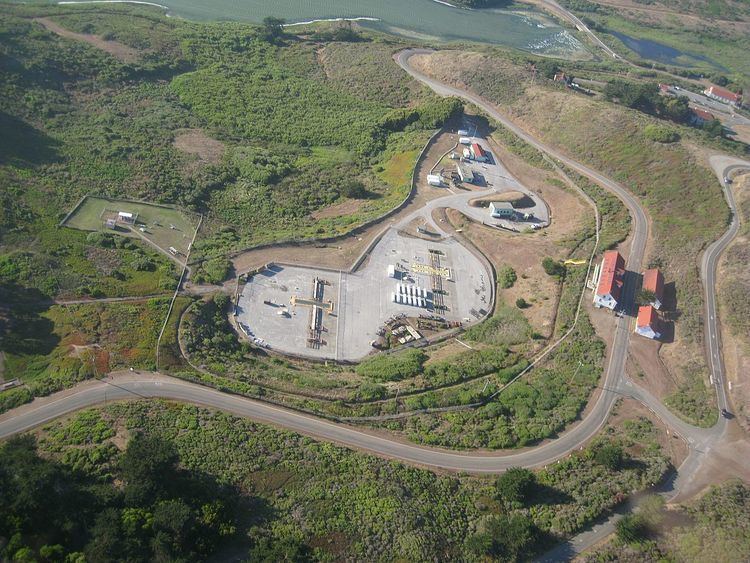Public transit access Line 76X | Phone +1 415-331-1453 | |
 | ||
Website www.nps.gov/goga/nike-missile-site.htm Hours Closed today MondayClosedTuesdayClosedWednesdayClosedThursday12:30–3:30PMFriday(Cesar Chavez Day)12:30–3:30PMHours might differSaturday12:30–3:30PMSundayClosedSuggest an edit Similar Tennessee Valley Trailhead, Mount Tamalpais State Park, Golden Gate View Point, Acqua Hotel, Fort Cronkhite | ||
Nike missile site sf 88
SF-88 is a former Nike Missile launch site at Fort Barry, in the Marin Headlands to the north of San Francisco, California, United States. Opened in 1954, the site was intended to protect the population and military installations of the San Francisco Bay Area during the Cold War, specifically from attack by Soviet bomber aircraft. The site was originally armed with Nike Ajax missiles, and modifications were made to the site in 1958 to allow it to also be armed with Nike Hercules missiles. In 1974, SF-88 was closed but was not demolished. It is now part of the Golden Gate National Recreation Area and is open to visitors. Normal visiting days are Thursday-Saturday. A special tour with Nike veterans occurs on the first Saturday of each month. Restoration work to the site is done on remaining Saturdays by volunteers.
Contents
Inside nike missile site sf 88
History
Construction of SF-88 was already under way by July 7, 1954, when the San Francisco Chronicle reported that four Nike launching sites were being built in the area: near Lake Chabot (SF-31) and at Forts Baker (SF-89), Barry (SF-88), and Cronkhite (SF-87). Captain Henry Paine assumed command of Battery A of the newly-renamed 9th Antiaircraft Artillery Guided Missile Battalion of the 30th Antiaircraft Artillery Group on October 1, 1954, and the first temporary emplacements were ready for service by October 28, 1954. The Nike-Ajax missiles were removed and replaced with Nike-Hercules missiles in November 1958.
SF-88 was inactivated in 1974 as part of the general continental United States phase-out of the Nike project. As part of SALT I, one missile site each could be retained by the United States and the Soviet Union for historical purposes, and SF-88 was chosen as the historical missile site in the United States. The Army agreed, and the land occupied by SF-88 was transferred to the National Park Service in 1974, to be retained as a "Historic Memorial to Air Defense – NIKE Hercules" with "Army technicians to remain on site to explain and demonstrate NIKE operation until replaced by [Golden Gate National Recreation Area] personnel." One caveat was that no explosives or classified information would accompany the transfer of SF-88, although the plan was to hold classified information at Fort Bliss until they were declassified. Final transfer to the National Park Service occurred on February 12, 1976.
The present area open for tours is the launch area, SF-88L. The integrated fire control area, SF-88C, was part of the land transferred to the National Park Service but it has not been restored as SF-88L has due to the remote location and inclement weather at SF-88C. SF-88C lies on Wolf Ridge and can be accessed by foot from Fort Cronkhite. A High Power Acquisition Radar (HIPAR) was added to SF-88C in the early 1960s, resulting in the construction of a 50-foot (15 m) tall tower and dome which was the most striking aspect of SF-88C. The dome and tower have been removed, but the gravel pad remains. Other target tracking radar towers remain, albeit in a deteriorated condition, with the steel platforms collapsed and/or removed in the last ten years.
